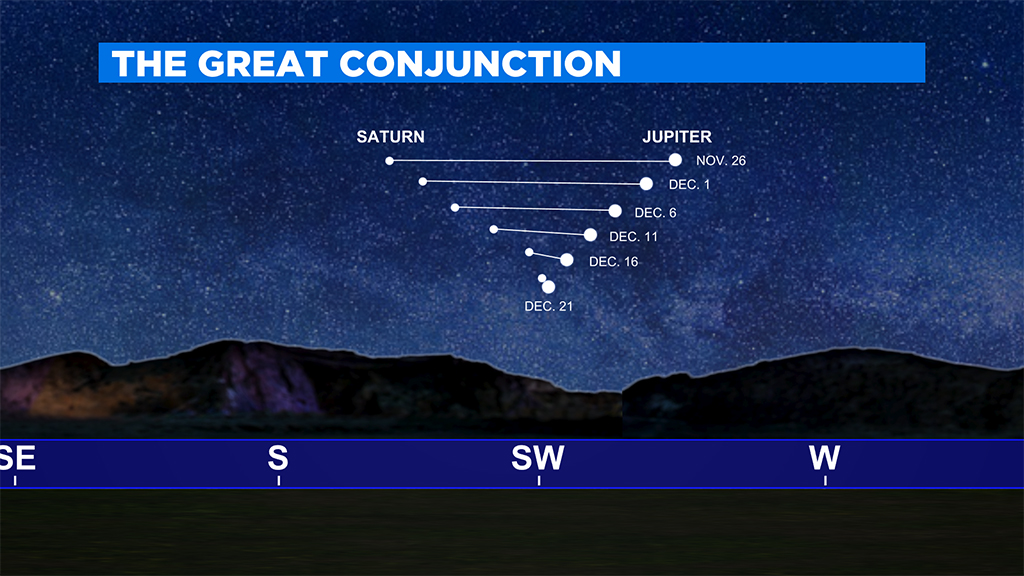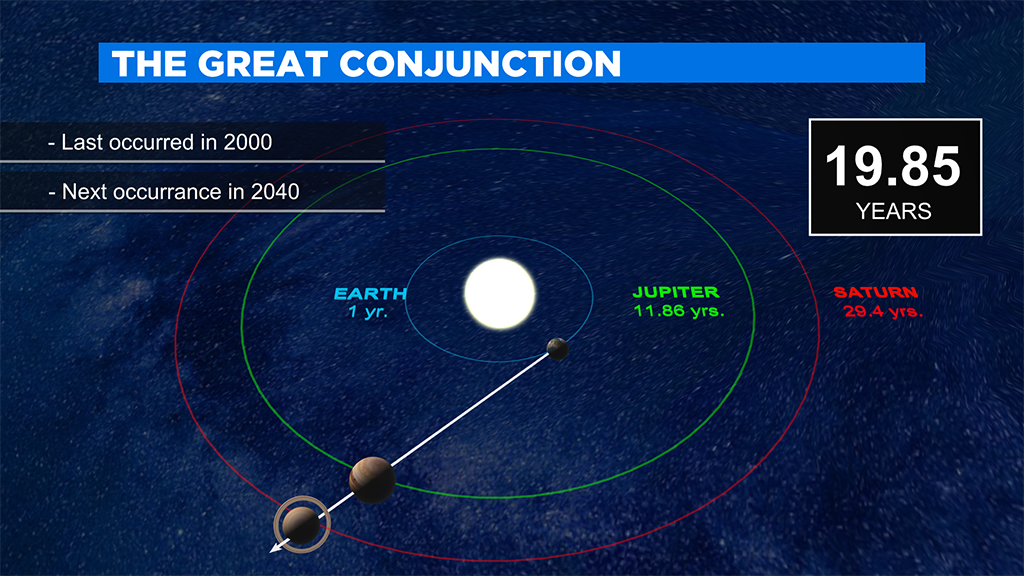[ad_1]
BOSTON (CBS) — In a year when “social distancing” has become the norm, how ironic that we will be celebrating something called the “Great Conjunction.” While we Earthlings stay at a safe distance from each other, Saturn and Jupiter are doing just the opposite! On December 21st these two giant planets will appear closer together in our sky than any time in the prior 400 years! Yes, you read that right: The last time Saturn and Jupiter were this close, Galileo was watching!

(WBZ-TV graphic)
Commonly referred to as the “Christmas Star,” this years’ planetary show promises to be out of this world. On their closest approach, at around 1 p.m. on the 21st, the two planets will appear just 0.1 degrees apart. By the time we get to check them out that night they will already have started to spread apart, although they will still appear to nearly be touching.
This begs the question, do they ever cover each other up exactly? THAT is truly a rare occasion, the last occultation occurred in 6857 BC and the next one not until 7541 AD.
Of course, the planets aren’t really close together at all, in fact, they are actually hundreds of millions of miles apart. It is only from the vantage point of Earth that they appear to be nearly touching. Jupiter, being closer to Earth and to the Sun than Saturn is moving at a much faster orbital speed than Saturn. And, from our perch here on Earth, we are essentially watching Jupiter catch up to and pass in front of Saturn. Given that the solar system is tilted, we are watching at an angle, hence why it is so rare that they actually pass directly over one another.

(WBZ-TV graphic)
So what’s the best way to see this once in a lifetime event?
For Bostonians and others in the northeast, you will need to find an unobstructed view of the southwestern sky, away from as much natural light as possible. (although the planets are so bright you will be able to see with the unaided eye even in the City).
You will need a good view of the horizon as the planets will be fairly low to the ground only about 14 degrees up.
Start looking about 45 minutes after sunset (around 5 p.m.)…you only have a few hours as they will set around 7 p.m.
So which is which?
In the nights leading up to the 21st Saturn will be gaining on Jupiter from the upper left, getting closer and closer each night. Jupiter will be the brighter star of the two and appear to the lower right at Saturn.
On Dec 21, Jupiter will overtake Saturn and they will essentially swap places in the nighttime sky.
If you have binoculars or a telescope you get an extra bonus! Many of Jupiter and Saturn’s moons will also be visible during the conjunction.
If you miss it this go around you are gonna have to wait a bit to see anything near as stunning. On November 4, 2040 they will appear about 1.2 degrees apart…meh, ok. It won’t be until the 2400’s until they approach this closely again.
Happy sky watching!
Follow Terry on Twitter @TerryWBZ
Related
[ad_2]
Source link